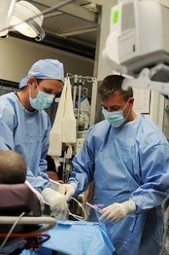Pilots, astronauts and workers in other high-risk industries follow rigorous safety checklists to help them avoid hazards. Checklists have shown potential to reduce risk in health care, too, but the challenge is figuring out how to incorporate them into physicians’ and nurses’ work flow.
A Stanford team has built a solution: an automated checklist that pulls data directly from patients’ electronic medical records and pushes alerts to caregivers. The checklist, and a dashboard-style interface they used to interact with it, caused a three-fold drop in the rates of a serious type of hospital-acquired infection, the team found. The work has just been published in Pediatrics.
From our press release about the study:
“Electronic medical records are data-rich and information-poor,” said Natalie Pageler, MD, the study’s lead author. Often, the data in electronic medical records is cumbersome for caregivers to use in real time, but the study showed a way to change that, said Pageler, who is a critical care medicine specialist at the hospital and a clinical associate professor of pediatrics. “Our new tool lets physicians focus on taking care of the patient while automating some of the background safety checks.”
Working in the pediatric intensive care unit at Lucile Packard Children’s Hospital Stanford, the researchers focused on bloodstream infections that occur via central lines, which are catheters inserted in major veins. The automated alerts were designed to help physicians and nurses follow an established set of best practices for caring for central lines. For example, alerts were generated when the dressing on a patient’s central line was due to be changed.
The drop in the rate of central line infections – from 2.6 to 0.7 infections per 1,000 days of central line use – not only protected patients from harm; it also saved money. The team estimated that the savings in the pediatric intensive care unit were about $260,000 per year.
Next, the researchers hope to adapt the automated checklists to other uses, such as helping to guide the recovery of patients who have received organ transplants.



 Your new post is loading...
Your new post is loading...








What a great way to improve health and safety within hospitals!